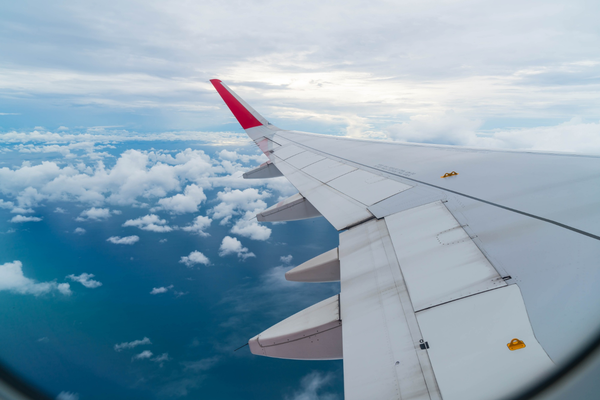Pan American World Airways was the face of the golden age of flying. With massive jets, a sterling reputation and a global presence, the airline was known for being on the cutting edge and delivering world-class service. Pan Am is arguably the most influential airline to ever grace the skies, with its impact still being seen in today’s airline operations.
Despite this, by the 1980s, Pan Am was struggling. The deregulation of the U.S. airline industry, which occurred in 1978, led to intense competition and a slew of unforeseen challenges. Therefore, in 1981, the directors of Pan Am determined it was time for a leadership change: They appointed Tom Plaskett, a former employee of American and Continental, as the new chief executive. Plaskett was determined to reverse the bad fortune of Pan Am. At first, by improving the physical appearance of the airline and its financial performance by installing yield management systems, he made progress. These efforts, combined with a strong economy and heavy demand for transatlantic flying allowed Pan Am to record a profit in the third quarter of 1988. It seemed as though Pan Am had a chance at survival.

However, in December of 1988, an incident that changed the trajectory of the airline occurred in Europe. Pan Am Flight 103, a Boeing 747 filled with 259 people traveling between London and New York, suffered a terrorist attack when a bomb exploded in the aircraft over Lockerbie, Scotland. 270 people perished, including 11 on the ground. Following this attack, Pan Am lost half of its transatlantic bookings in a matter of hours. In the time that followed, the carrier lost half a million dollars in sales as travelers felt a sense of danger flying with the airline across the ocean. This terrorist attack and the impact it had on sales crushed Pan Am’s hope for survival. The airline needed a buyer.
Plaskett was determined to get a buyer. However, doing this would take time and the airline needed cash immediately. Though the airline was desperately avoiding liquidation, Pan Am had one asset that, if sold, could bring in the much-needed cash: its routes to London. Given Heathrow Airport’s incredibly restrictive availability, United showed a lot of interest in purchasing these routes for $400 million dollars. It seemed as though Pan Am would finally catch a break and receive the resources needed to find a buyer.

Unfortunately, officials in England threatened to end the deal. The conditions in the contracts under which Pan Am flew to London stated that it was only valid for Pan Am or a “corporate successor” of the carrier. The opposition to the slot swap argued that United was not actually a corporate successor, rather the carriers were just trading assets. Additionally, British Airways also came out against the deal. Given that it had enjoyed competing against a weak Pan Am for years, British Airways was not eager to see a stronger competitor begin flying the same routes as them. On top of this, British Airways enjoyed an extensive and profitable codesharing partnership with United, one that would certainly be eliminated if United got access to Heathrow.
Despite a heated debate, the slots were finally approved to transfer to United, giving Pan Am much-needed income. However, with a war in the Persian Gulf, fuel prices rose, depleting the airline’s cash reserves. In early January 1991, the airline entered bankruptcy. Plaskett’s new objective became not to save the company, but to find a seller who wanted all of Pan Am. This proved to be a difficult challenge, with other airlines only interested in bits and pieces of the former giant. At one point, United and Delta proposed a joint bid, where each airline took what they needed from the company. Delta, lacking a global presence, would receive some of Pan Am’s transatlantic flights while United would receive its Latin American routes. However, the deal was ended over a dispute over who would have gotten the London to Miami route.

Despite this, Delta still seemed interested in acquiring all of Pan Am. On September 1, 1991, the deal was closed, with Delta planning to allow Pan Am to operate as its own company after reorganizing and funding it. Quickly, however, dealing with dispirited employees and unprofitable routes, Delta canceled its plans to bail out Pan Am due to poor performance. With no more income, Pan Am was grounded once and for all. On December 4, 1991, the final Pan Am flight touched down in Miami, marking the end of not only an airline, but an era.
Comments (6)
 Alejandra
Hey there! Do you know if they make any plugins to help with SEO?
I'm trying to get my website to rank for some targeted keywords
but I'm not seeing very good success. If you know
of any please share. Kudos! You can read similar text
here: Backlinks List
Alejandra
Hey there! Do you know if they make any plugins to help with SEO?
I'm trying to get my website to rank for some targeted keywords
but I'm not seeing very good success. If you know
of any please share. Kudos! You can read similar text
here: Backlinks List
 Genia
Hello there! Do you know if they make any plugins to help
with SEO? I'm trying to get my blog to rank for some targeted keywords but I'm not seeing very good gains.
If you know of any please share. Thanks! You can read similar article here:
GSA List
Genia
Hello there! Do you know if they make any plugins to help
with SEO? I'm trying to get my blog to rank for some targeted keywords but I'm not seeing very good gains.
If you know of any please share. Thanks! You can read similar article here:
GSA List
 Gabriela
Howdy! Do you know if they make any plugins to help with SEO?
I'm trying to get my blog to rank for some targeted keywords but I'm not seeing very good results.
If you know of any please share. Kudos! You can read similar article here:
Dobry sklep
Gabriela
Howdy! Do you know if they make any plugins to help with SEO?
I'm trying to get my blog to rank for some targeted keywords but I'm not seeing very good results.
If you know of any please share. Kudos! You can read similar article here:
Dobry sklep
 Daryl
Hi there! Do you know if they make any plugins to help with Search Engine Optimization? I'm trying
to get my blog to rank for some targeted keywords but I'm not
seeing very good success. If you know of any please share.
Appreciate it! You can read similar article here: Dobry sklep
Daryl
Hi there! Do you know if they make any plugins to help with Search Engine Optimization? I'm trying
to get my blog to rank for some targeted keywords but I'm not
seeing very good success. If you know of any please share.
Appreciate it! You can read similar article here: Dobry sklep
 Augustus
Thanks for sharing your thoughts about news. Regards I saw
similar here: sklep online and also here: dobry sklep
Augustus
Thanks for sharing your thoughts about news. Regards I saw
similar here: sklep online and also here: dobry sklep

Add Your Comment
SHARE
TAGS
INFORMATIONAL pan ampan american world airwaysinformationalRECENTLY PUBLISHED
 United Expands Winter Schedule Following Spirit Airlines Bankruptcy
For the second time in less than a year, Spirit Airlines has filed for bankruptcy protection, raising fresh concerns about the stability of the ultra-low-cost carrier model in the United States.
NEWS
READ MORE »
United Expands Winter Schedule Following Spirit Airlines Bankruptcy
For the second time in less than a year, Spirit Airlines has filed for bankruptcy protection, raising fresh concerns about the stability of the ultra-low-cost carrier model in the United States.
NEWS
READ MORE »
 The Future Of Aerospace: Integrating Satellite Analytics With Aviation Systems
The aerospace sector is undergoing significant change as space technologies blend with aviation. Having the most up-to-date satellite images now means progress in air traffic control and weather forecasting.
INFORMATIONAL
READ MORE »
The Future Of Aerospace: Integrating Satellite Analytics With Aviation Systems
The aerospace sector is undergoing significant change as space technologies blend with aviation. Having the most up-to-date satellite images now means progress in air traffic control and weather forecasting.
INFORMATIONAL
READ MORE »
 The Swiss Standard of Comfort Transfers: Clean, Timely, Elegant
For luxury travellers and business clients, the Swiss standard of transport is not merely about getting from one point to another - it is about arriving in comfort, style, and absolute professionalism.
INFORMATIONAL
READ MORE »
The Swiss Standard of Comfort Transfers: Clean, Timely, Elegant
For luxury travellers and business clients, the Swiss standard of transport is not merely about getting from one point to another - it is about arriving in comfort, style, and absolute professionalism.
INFORMATIONAL
READ MORE »



